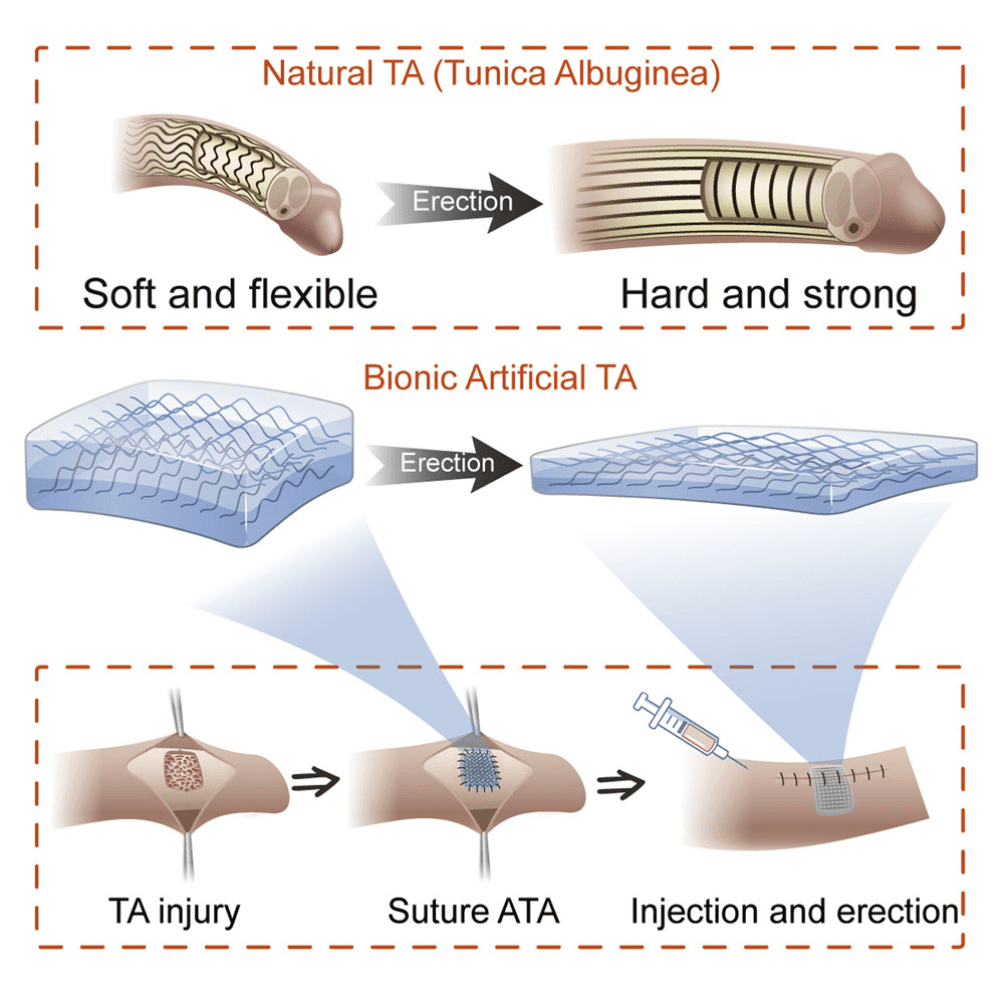A novel type of synthetic tissue has been successful in returning erectile function to pig penises in a new study. The breakthrough mimicked the unique tissue needed to maintain an erection and could hold promise for future therapies to repair penile injuries in humans.
Part of the difficulty in repairing mammalian penises relates to their structure. The structure of the penis is a hydrostatic skeleton composed of a cavity (a tissue type called the corpus spongiosum) that fills with liquid (blood). The shape of the penis is therefore decided by the arrangement of fibrous tissue within that hydrostatic skeleton which can resist external deformation when the appendage is erect.
When this tissue is broken, the penis can be deformed and fail to maintain an erection, but new research has created a synthetic tissue (named artificial tunica albuginea, or ATA) that can mimic the damaged tissue. In mammalian sexual reproduction, the penis needs to become erect in order to achieve sufficient penetration so that semen is delivered to the right place. Returning proper erectile function is therefore crucial for fertility, as well as a person’s quality of life.
Owing to the complex fibrous sheath tissue needed to maintain an erection, the researchers knew they had their work cut out in creating a similarly complex synthetic alternative. However, in pig models at least, it seems they’ve been successful.
The bionic patch means the penis can maintain its microstructure while erect and load-bear without deformation. Image credit: Matter Chai et al
“We largely foresaw the problems and results of the ATA construction process, but we were still surprised by the results in the animal experiments, where the penis regained normal erection immediately after the use of ATA,” said study author Xuetao Shi, a researcher at the South China University of Technology in Guangzhou, China, in a statement.
By successfully recreating the microstructures of this natural tissue, the researchers are now hopeful that a similar solution could be applied to other “load-bearing” parts of the body.
“The high degree of adaptability of material structure and function in natural tissues is what interests me the most,” Shi told IFLScience. “As a biomaterial researcher, the delicate structure of natural tissues has always taken my breath away.”
“Maybe one day we will be able to figure out the relationship between all the natural tissue structures and properties and process them skilfully. It is even possible to use the designed structures to surpass the natural tissues, which is one of the goals of our research on tissue engineering.”
While tissue transplants have been used to treat damaged tunica albuginea tissue historically, these patches were prone to rejection and poor function as their microstructures didn’t match that of the surrounding tissue. The microstructure of ATA developed by the researchers was based on polyvinyl alcohol, which has a curled fiber structure that’s similar to tunica albuginea.
They then used the ATA to repair injuries in pigs and found that the patch was able to achieve normal erectile function when the appendage was filled with saline solution, mimicking an erection. Though the results weren’t perfect, they mark a step forward in an otherwise understudied area of penile injury and repair.
The research still has some way to go in establishing long-term efficiency, as breakage is a possible risk. Before human applications are on the cards, the patches would also need to be tested for biocompatibility, but the team hopes to build on their work as further investigate how the ATA patch could serve to benefit male reproductive health.
The study was published in the journal Matter.
Source Link: New Bionic Patch Can Reverse Traumatic Erectile Dysfunction In Pigs
